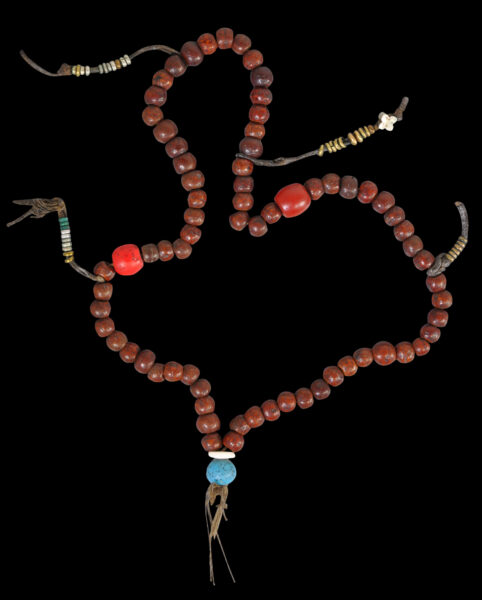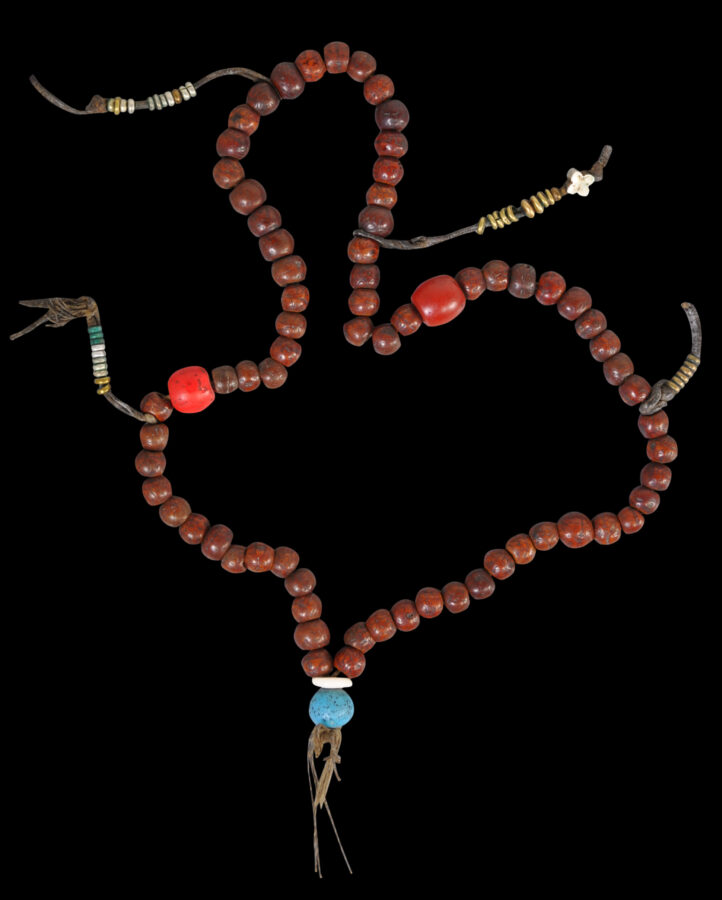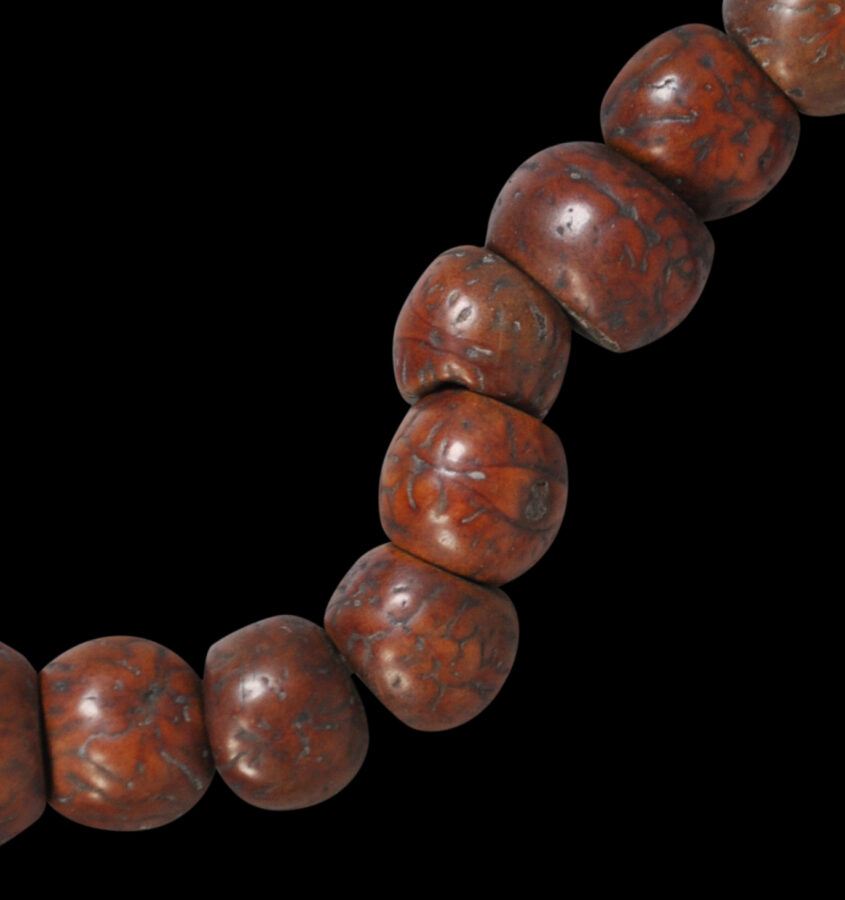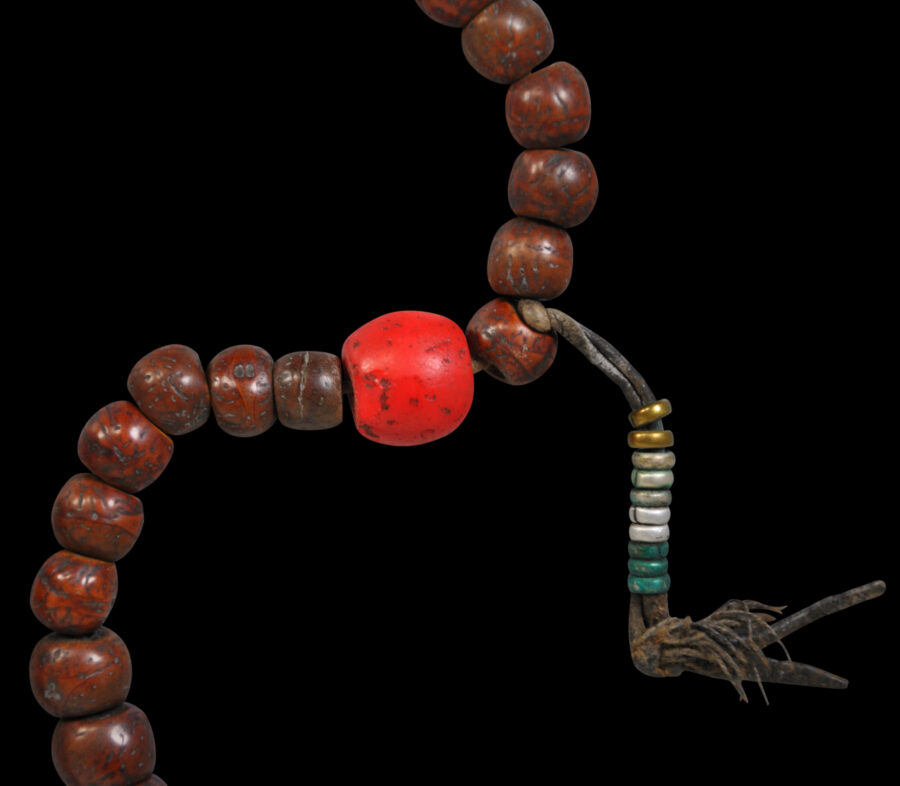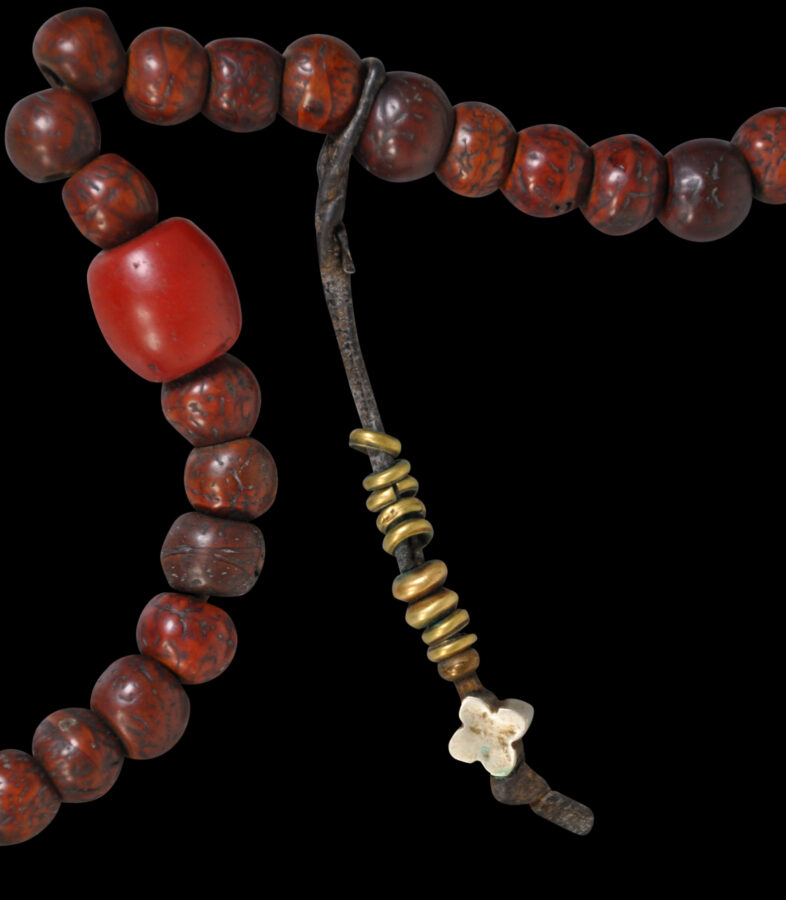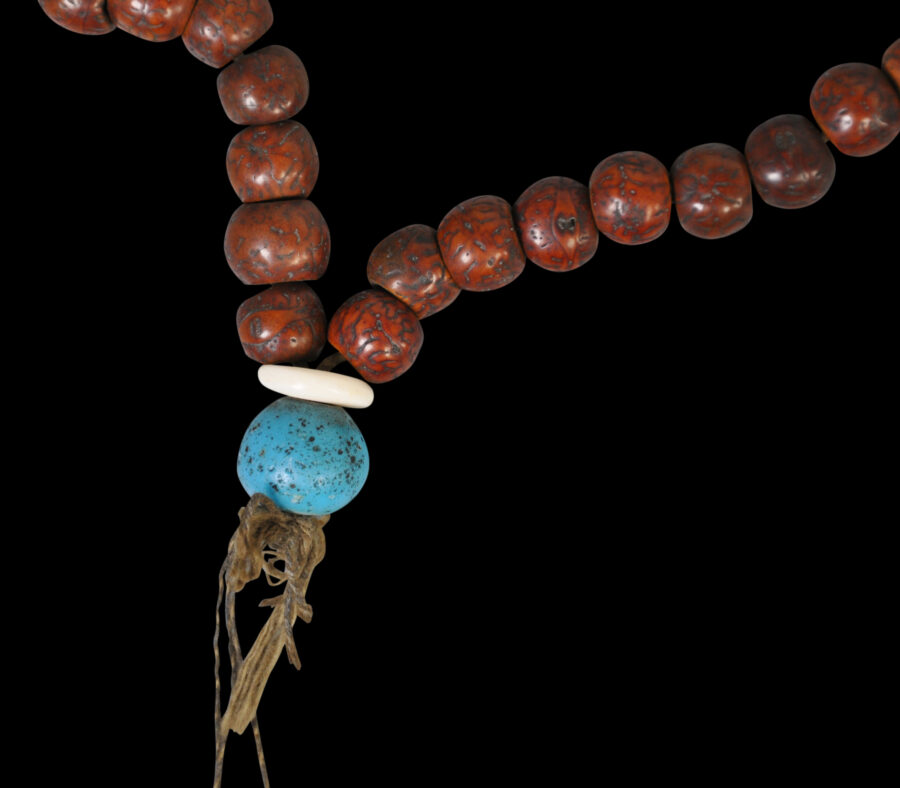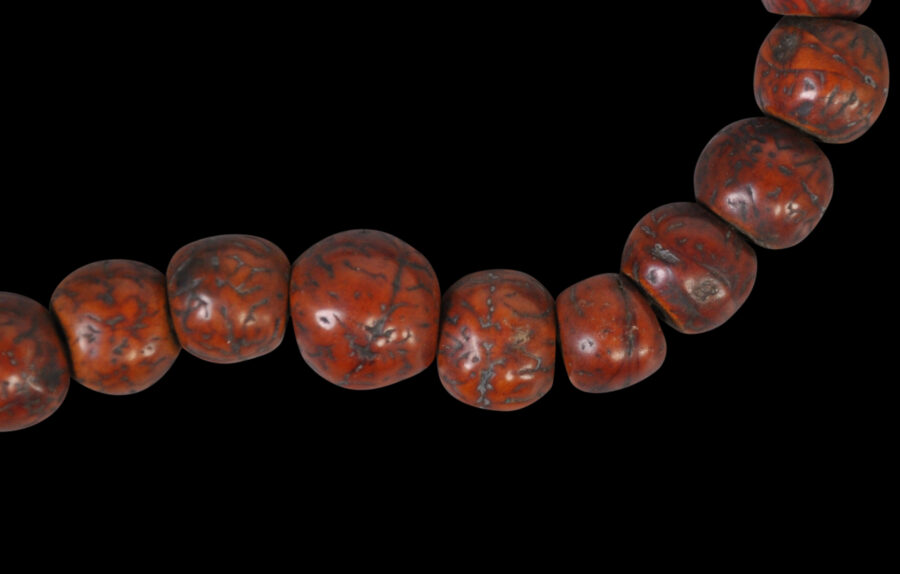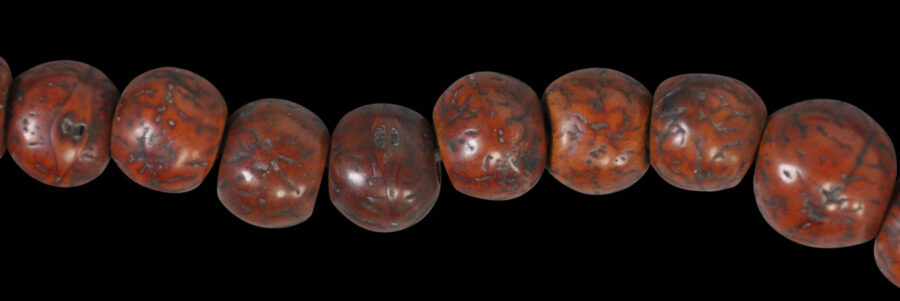This Buddhist rosary (sin-‘phen) or mala comprises 69 rudraksha seeds almost certainly imported from India that have been worn smooth and round compared with the usual rough, grainy state. They might also be of the related bodhi seed.
There is also a chank shell disk, and two red and one blue glass beads which show much wear.
There are also four sets of silver and brass bead counters (three lots of ten beads and one set with just six beads). One set terminates with a silver quatrefoil bead.
The counters are on their original leather straps.
The rudraksha seed is the stone of the fruit of the utrasam tree and Hindus believe it is sacred to Shiva. The name ‘rudraksha’ means ‘eye of Rudra’, an ancient name for Shiva. The seeds are made into beads and worn as rosaries, necklaces and bracelets by Shaivite devotees and priests. Many devotees never remove such items, considering them among their most sacred possessions. Rudraksha seeds found their way to Tibet and similarly were incorporated into sets of malas as in the case here.
Buddhist rosaries evolved from ancient Hindu-Indian mala prayer beads. In Tibet, they were used by both laymen and monks. They are supposed to comprise 108 beads plus others as counters, although sectarian variants might have fewer. The main prayer beads were used to count repetitions of prayers and the counters were used to record multiples of the main beads, so that thousands of repetitions could be counted. They are the main item a Tibetan practicing Buddhist would own. Usually, they were held in the left hand whilst being used.
The set here is in a fine, stable condition.
References
Henss, M., Buddhist Ritual Art of Tibet: A Handbook on Ceremonial Objects and Ritual Furnishings in the Tibetan Temple, Arnoldsche, 2020.
Reynolds, V., Tibet: A Lost World: The Newark Museum Collection of Tibetan Art and Ethnology, The American Federation of Arts, 1978.
Sherr Dubin, L., The Worldwide History of Beads, Thames & Hudson, 2009.


